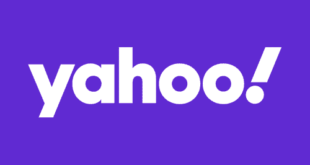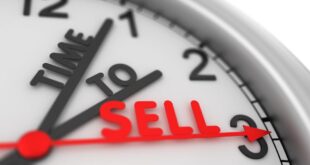As a long-term dividend-focused investor, I face the very real risk that I end up falling in love with a stock. That could lead me to miss important cues if (or perhaps when) a company’s business falters. However, I’ve sold great companies before (one is on this list) and regretted it, which is why I’m planning to never sell Realty Income (NYSE: O), Procter & Gamble (NYSE: PG), and Hormel Foods (NYSE: HRL).
Here’s a quick look at why.
1. I sold Realty Income once, I won’t do it again
I bought Realty Income a very long time ago when it was yielding more than 10%, largely because real estate investment trusts (REITs) were still a niche sector on Wall Street. When the yield fell to around 4%, I sold it, collecting a sizable capital gain. But I ended up missing out on years of dividend growth and, honestly, I regretted the short-term decision I made. As luck would have it, another REIT I owned was bought by Realty Income, and I’m a happy shareholder again. I won’t be selling it a second time.

There are a couple of reasons for this dedication. First off, Realty Income has proven itself to be a conservative and reliable dividend payer. It has an investment grade-rated balance sheet and has increased its dividend annually for 29 consecutive years. That’s not something you achieve by accident. Then there’s the fact that it is the heavyweight champion of the net-lease niche. Net leases require tenants to pay most property-level operating costs. It is a fairly low-risk model if the property portfolio is large enough. Realty Income owns over 15,400 properties spread across North America and Europe. The company’s size and financial strength, meanwhile, allow it advantaged access to capital markets to fund its growth.
I don’t expect Realty Income to grow quickly, but slow and steady is just fine for me when you combine it with the REIT’s 5% dividend yield.
2. Procter & Gamble has the skills needed to lead
Procter & Gamble (P&G) is another industry giant, this time in the consumer-staples space. You probably know its brands, which include Bounty, Tide, Pampers, and Gillette, among many others. It is a Dividend King, with 68 consecutive annual dividend increases under its belt. That’s a record that few companies can match, but the real attraction here is centered around P&G’s skill set.
The company is large and financially strong, but that’s just table stakes in the consumer staples sector. What distinguishes P&G is its research and development, marketing, and distribution might. Few companies can match it. In fact, the company doesn’t actually focus on gaining market share in the product segments it serves but on expanding the segment with new and innovative products. As an example, the company created the Swiffer business, adding an entirely new category to the cleaning-products niche. That required research and development (R&D) skills to create Swiffer, marketing skills to get consumers interested, and the ability to push the new product out to stores so it was widely available for purchase. All of that sounds easy, but it isn’t, and P&G stands “Head & Shoulders” (pun intended, since that’s one of the company’s brands) above the competition.
Procter & Gamble currently yields around 2.4%. I bought it when the yield was closer to 4%, so I’m sitting on some nice capital gains. But I have no intention of selling; I’ll just let this consumer-staples giant keep growing its business over time and rewarding me with more dividend increases. If you don’t own it, it is probably one for the wishlist just in case a bear market comes along. If this baby goes out with the bathwater, you should jump at the opportunity to add it to your portfolio.
3. Hormel is struggling, and I’m doing OK with it
Like P&G, Hormel is a Dividend King. It has increased its dividend annually for 58 consecutive years. That said, it is deeply out of favor right now, offering investors a historically high 3.6% dividend yield. The stock is on the discount rack in a big way.
Once a meat producer, Hormel is now a food maker with a focus on branded-protein products including meats and nuts. It has been growing its portfolio via innovation and acquisition. It has also been expanding its reach globally. Basically, Hormel is looking to become one of the big names in the food sector. Lately, the effort hasn’t been going well thanks to rising operating costs (which the company hasn’t been able to pass along to consumers as well as peers), avian flu, a slow pandemic recovery in China, and the decision to buy Planters just as the nut segment of the snack sector started to slow down. None of these problems are insurmountable, but when they come all at once, they are pretty daunting. It isn’t unreasonable for investors to be worried.
But there’s a unique twist here. The Hormel Foundation owns nearly 47% of Hormel’s stock, and the not-for-profit relies on the dividends it collects to support its operations. They have a vested interest in ensuring that Hormel does what it takes to keep the business growing and the dividend strong, which basically means there’s an insider who has my back here. I’m not selling this one despite the troubles it faces right now. And you might want to hold your nose and jump aboard while the stock is still unloved. If the Hormel Foundation has anything to say about it, and it does, Hormel will figure out how to right the ship while continuing to support and grow its dividend.
I could change my mind, but I doubt it
There is always a chance that Realty Income, Procter & Gamble, or Hormel materially change the way they operate. If that were to happen, I’d have to reconsider my commitment to each of these reliable dividend stocks. But until that happens, I’m sticking with them, hopefully until I pass them on to my heirs. I learned my lesson when I sold Realty Income … great businesses are worth holding on to.
Don’t miss this second chance at a potentially lucrative opportunity
Ever feel like you missed the boat in buying the most successful stocks? Then you’ll want to hear this.
On rare occasions, our expert team of analysts issues a “Double Down” stock recommendation for companies that they think are about to pop. If you’re worried you’ve already missed your chance to invest, now is the best time to buy before it’s too late. And the numbers speak for themselves:
-
Amazon: if you invested $1,000 when we doubled down in 2010, you’d have $21,266!*
-
Apple: if you invested $1,000 when we doubled down in 2008, you’d have $43,047!*
-
Netflix: if you invested $1,000 when we doubled down in 2004, you’d have $389,794!*
Right now, we’re issuing “Double Down” alerts for three incredible companies, and there may not be another chance like this anytime soon.
*Stock Advisor returns as of October 7, 2024
Reuben Gregg Brewer has positions in Hormel Foods, Procter & Gamble, and Realty Income. The Motley Fool has positions in and recommends Realty Income. The Motley Fool has a disclosure policy.
3 Magnificent Dividend Stocks That I’m “Never” Selling was originally published by The Motley Fool
Source link
 meganwoolsey Home
meganwoolsey Home



